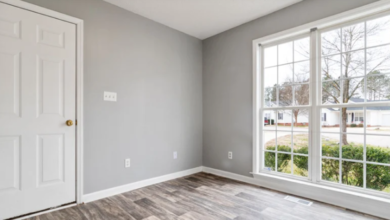
How to Soundproof a Basement: Essential Tips & Techniques
Converting a basement into a functional space, whether it’s a home theater, music studio, or office, requires more than just aesthetics. One of the most overlooked yet critical components is noise control. For homeowners considering basement finishing in Cumming, effective soundproofing ensures the space supports both privacy and comfort. Whether you’re keeping sound in or blocking it out, the right methods can make all the difference.
Assessing the Soundproofing Needs
Every basement presents unique acoustic challenges. Sounds can enter or escape through walls, ceilings, flooring, and even ductwork. Before diving into materials, it’s important to assess the purpose of the basement. A theater room will require different treatments than a gym or laundry area.
Understanding these needs helps determine which combination of materials and structural adjustments will deliver optimal sound control. Professionals typically evaluate which surfaces are most susceptible to noise transfer and prioritize those areas for treatment.
Enhancing Wall and Ceiling Insulation
One of the most effective ways to control sound is by reinforcing insulation within the walls and ceilings. Installing dense insulation batts between framing studs adds mass, which helps dampen airborne noise.
Professionals often recommend incorporating additional soundproofing barriers like resilient channels or isolation clips. These systems mechanically decouple drywall from the framing, reducing vibrations that carry sound. Layering mass-loaded vinyl between wall layers also adds sound-dampening weight without excessive thickness.
Acoustic ceiling tiles and drop ceiling panels with insulation above them can further limit noise bleed between floors, especially when paired with wall-mounted sound panels or fabric-wrapped boards.
Addressing Floor Vibrations and Echo
Flooring in a basement can also transmit sound, especially impact noise such as footsteps or dropped objects. To minimize this, experts frequently use soundproof underlayments beneath carpet, engineered wood, or vinyl flooring. These products are designed to absorb vibrations and soften sound transfer.
Rugs and thick padding can also help, but for lasting noise reduction, installing acoustic-grade floor assemblies delivers superior performance. This ensures the basement remains comfortable for both those inside and anyone on the floors above.
Sealing Gaps and Ductwork
Small gaps may seem minor, but they’re often the biggest culprits in poor soundproofing. Cracks around baseboards, doors, windows, and outlet covers allow sound to pass through easily. Sealing these areas with acoustical caulk or foam enhances the effectiveness of wall and ceiling treatments. Solid-core doors with weather stripping should replace hollow ones whenever possible.
Sound can also travel through HVAC ducts, so using lined ductwork or sound attenuators helps reduce mechanical noise transfer. In professional setups, these details are never overlooked because they significantly affect overall acoustic performance.
Choosing the Right Acoustic Treatments
Soundproofing isn’t just about keeping sound out; it’s also about improving how sound behaves within the room. Once structural elements are addressed, professionals may install additional soundproofing for home theater or music studio features such as acoustic panels, diffusers, or bass traps.
These materials fine-tune sound clarity while absorbing unwanted echoes or reverberation. Their placement depends on the room’s function and layout, but their impact is universally valuable.
Conclusion
Soundproofing a basement is a multi-layered process that combines insulation, structure, and surface treatments to create a quiet and functional environment. From enhanced wall and ceiling systems to acoustical flooring and precision ductwork, every component plays a vital role in managing sound. By partnering with skilled professionals, homeowners can achieve an acoustically balanced space that supports its intended use, whether it’s entertainment, work, or relaxation, without compromise.




